Thailand offers an incredibly diverse array of choices for expats and retirees to live. Nothing could illustrate this fact more vividly than a comparison of two of Thailand’s favorite seaside resorts: Hua Hin and Pattaya.
Hua Hin and Pattaya are like cousins positioned on opposite sides of the Gulf of Thailand. Despite sharing the same sun, sand, sea, and proximity to the capital city, they are extremely different. Both have been described as “sleepy little fishing villages” at some point in their history, yet their transformations have led them in very different directions.
Your chance to retire overseas now
Your chance to retire overseas now
Learn more about Thailand and other destinations by signing up to our daily IL Postcards e-letter and we'll immediately send you a free report: 20 Countries Compared, Contrasted, Ranked, and Rated.
You don’t have to be rich to enjoy a pampered retirement, you just need to know where to go.
With our 34th Annual Global Retirement Index, our experts hand you a detailed roadmap. Details and a Special Offer Here!

By submitting your email address, you will receive a free subscription to IL Postcards, Overseas Dream Home, The Untourist Daily and special offers from International Living and our affiliates. You can unsubscribe at any time, and we encourage you to read more about our Privacy Policy.
Hua Hin: A Royal Retreat
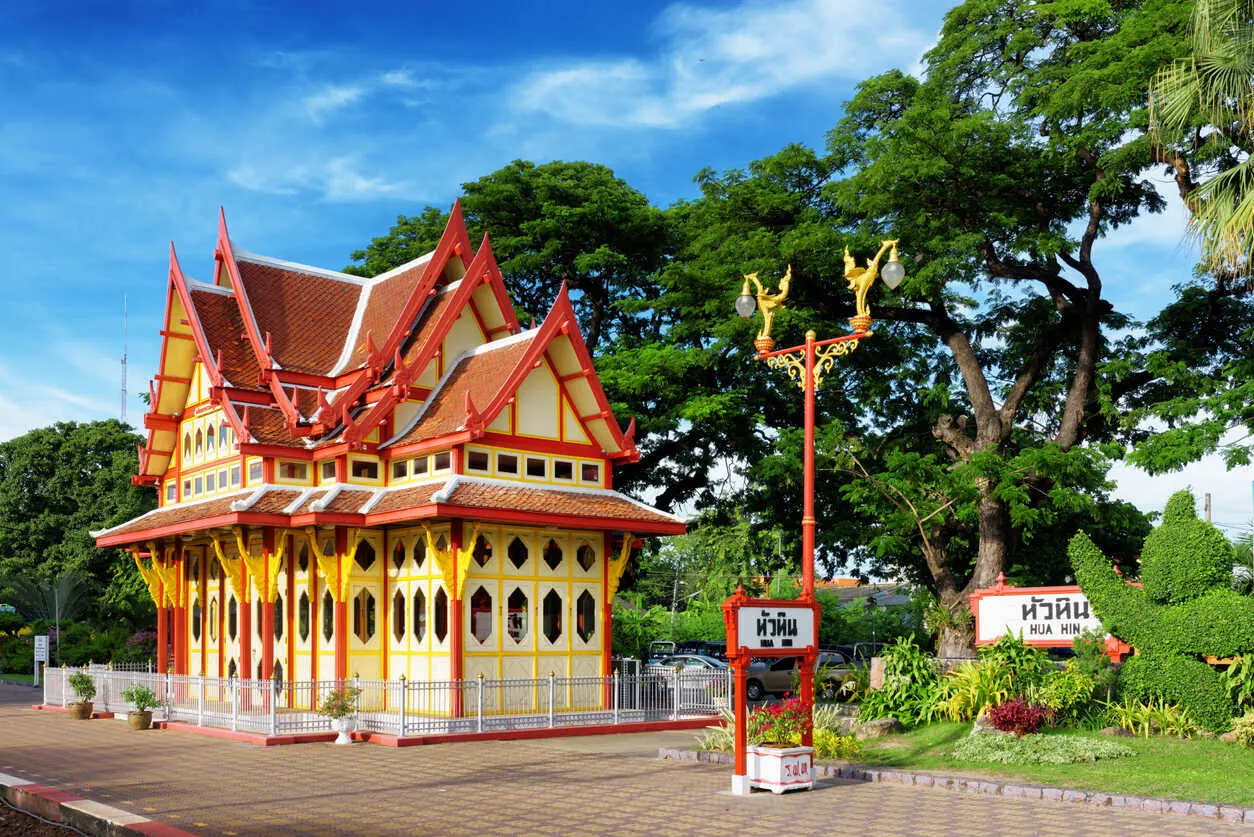
Hua Hin, situated 200 km southwest of Bangkok, lies in a thin stretch of coastline known as the “Thai Riviera,” which runs from Phetchaburi in the north to Chumphon in the south. Many refer to Hua Hin as Thailand’s “first beach resort” because it was popularized in the early 1920s by King Prajadhipok (Rama VII), who sought to escape the suffocating humidity of Bangkok. So enamored was he with the place that he built a summer palace named Wang Klai Kangwon, which means “far from worries” in Thai. This royal connection established Hua Hin as a retreat for Thailand’s elite.
Over the years, Hua Hin developed gradually. When the railway from Bangkok was completed, a classic train station built in the old Siam style began welcoming visitors from across the country. The emergence of world-class golf courses further defined Hua Hin’s character, attracting the upper-middle-class Thais and well-heeled expats from Bangkok.
In modern times, Hua Hin’s white sand beaches and sea breezes continue to draw the Thai upper crust. On long weekends, a steady stream of luxury cars from Bangkok heads south to play golf, stay in five-star resorts, ride horses on the beach, and indulge in copious amounts of seafood.
Pattaya: From Sleepy Village to Thriving Hub
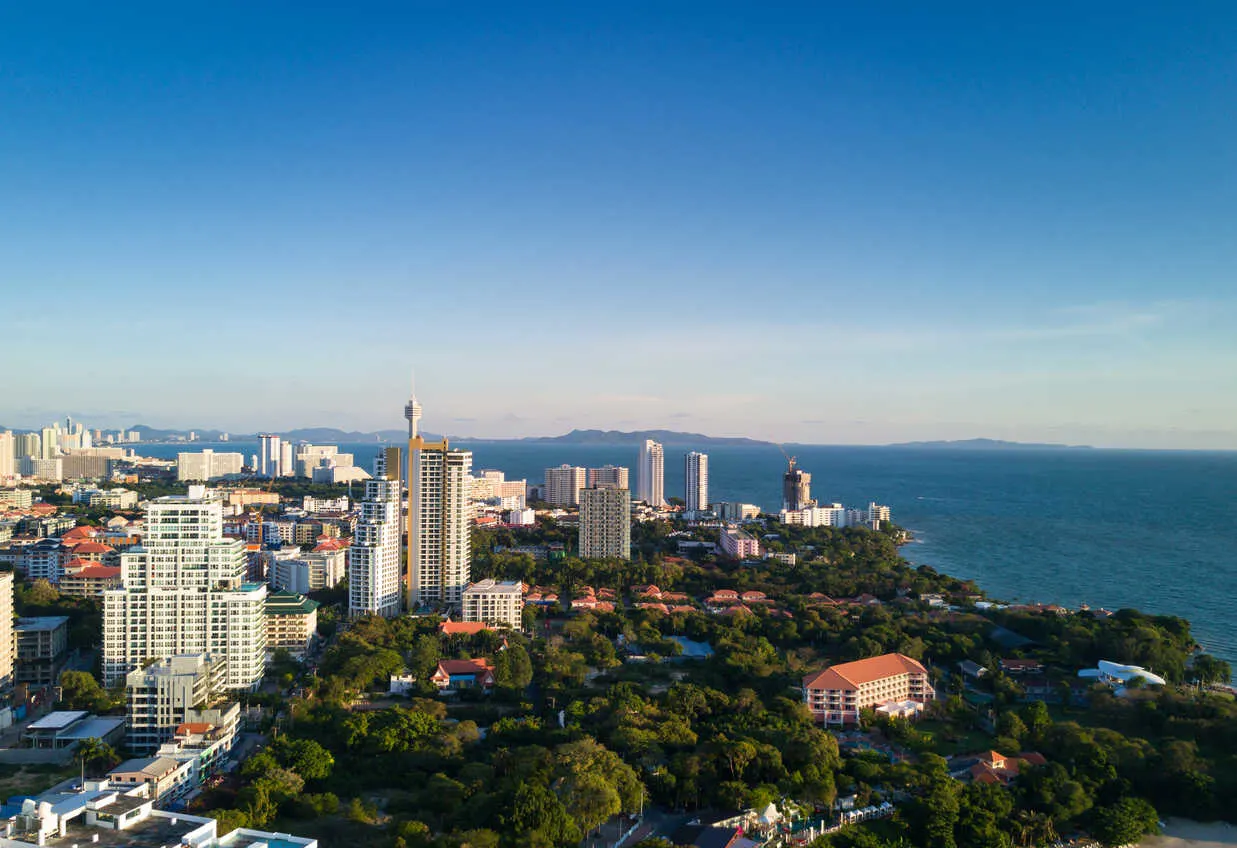
Now, flip the beach coin to see what’s on the other side, and you get Pattaya. While Hua Hin’s heritage is steeped in royalty, Pattaya’s history took a different turn, largely shaped by its connection to the U.S. military.
In the late 1960s, American military troops began arriving at strategic locations all over Thailand to support those fighting in the Vietnam War. U.S. Air Force personnel stationed at U-Tapao Air Base near Rayong, just 20 minutes down the eastern seaboard from Pattaya, discovered the then “sleepy fishing village” as an ideal spot for R&R. The influx of servicemen led to the birth of an entertainment industry designed to provide respite from the horrors of war, giving rise to go-go bars, massage parlors, and an abundance of bars stocked with beautiful young women and cheap alcohol.
In the decades following the war, Pattaya sprawled eastward and southward down the coast, with tourism and several industrial sectors expanding rapidly. However, the nightlife that began during the war years refused to die, mutating into a tourism juggernaut and an embarrassingly popular holiday attraction. Today, modern Pattaya is a rapidly developing metropolis with a thriving “family-friendly” tourism business and robust manufacturing and logistics industries, but the stigma of its past remains.
At first glance, it would be easy to conclude that Hua Hin is boring and Pattaya is sleazy. However, as anyone who has spent time in Southeast Asia can tell you, nothing is exactly as it seems. There’s a lot more to Hua Hin than golf, and there’s a lot more to Pattaya than go-go bars.
City vs. Town
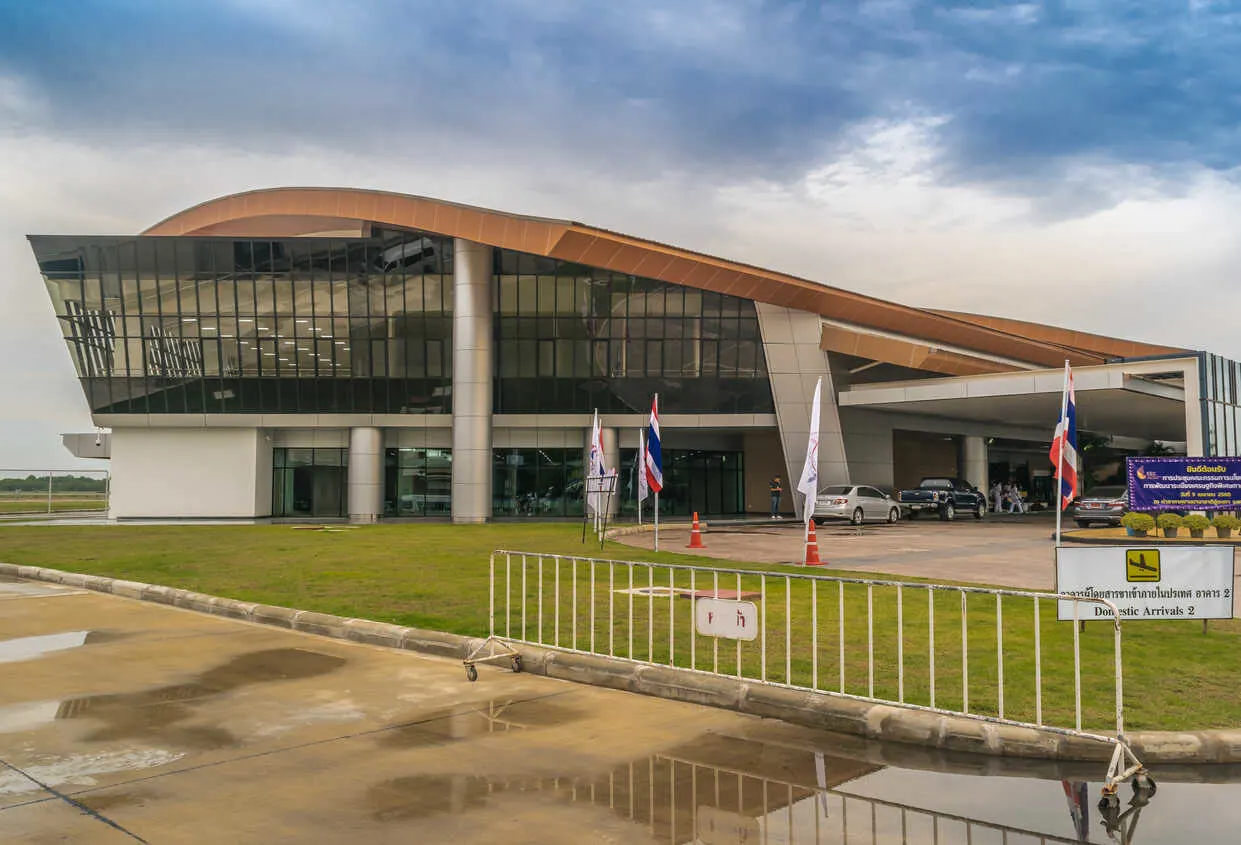
Geographically, Hua Hin is located on the western seaboard, in a zone officially known as “The Royal Coast,” close to Myanmar's border (Burma). In contrast, Pattaya lies on the eastern seaboard, along what is known as “The Chonburi Coast,” which starts at the deep-sea port of Laem Chabang in the north and runs to Rayong in the south, close to the Cambodian border.
Hua Hin’s population is about 80,000 residents, with an estimated 3,000 to 5,000 expats, and it welcomes about one million tourists per year. Pattaya, on the other hand, is at the center of the Pattaya-Chonburi Metropolitan area, with an estimated one million residents, including 180,000 foreigners, and entertains 10 million tourists annually. Put simply, Pattaya is a bustling city, while Hua Hin retains the charm and slower pace of a town.
Getting to Hua Hin from Bangkok takes a little over three hours by car, while Pattaya is about two hours away. Both locations offer cheap bus services from Bangkok: 450 THB ($12) one way to Hua Hin, and 200 to 450 THB ($5 to $12) to Pattaya, depending on the time of day. While Hua Hin has an airport, it currently only handles domestic flights. Pattaya, however, benefits from U-Tapao International Airport, located about a thirty-minute drive down the coast, offering a range of domestic flights and international destinations like Dubai and Kuala Lumpur.
Both locations are well-equipped with international hospitals; Hua Hin has three, while Pattaya has six. As you might imagine, there isn’t much crime in sleepy Hua Hin. Pattaya, despite its reputation as a party town, is relatively safe, with the occasional late-night alcohol-related incidents. But in a big party town like Pattaya, it’s still quite safe overall—you’d have to actively seek out trouble to find it.
Expats and Lifestyles
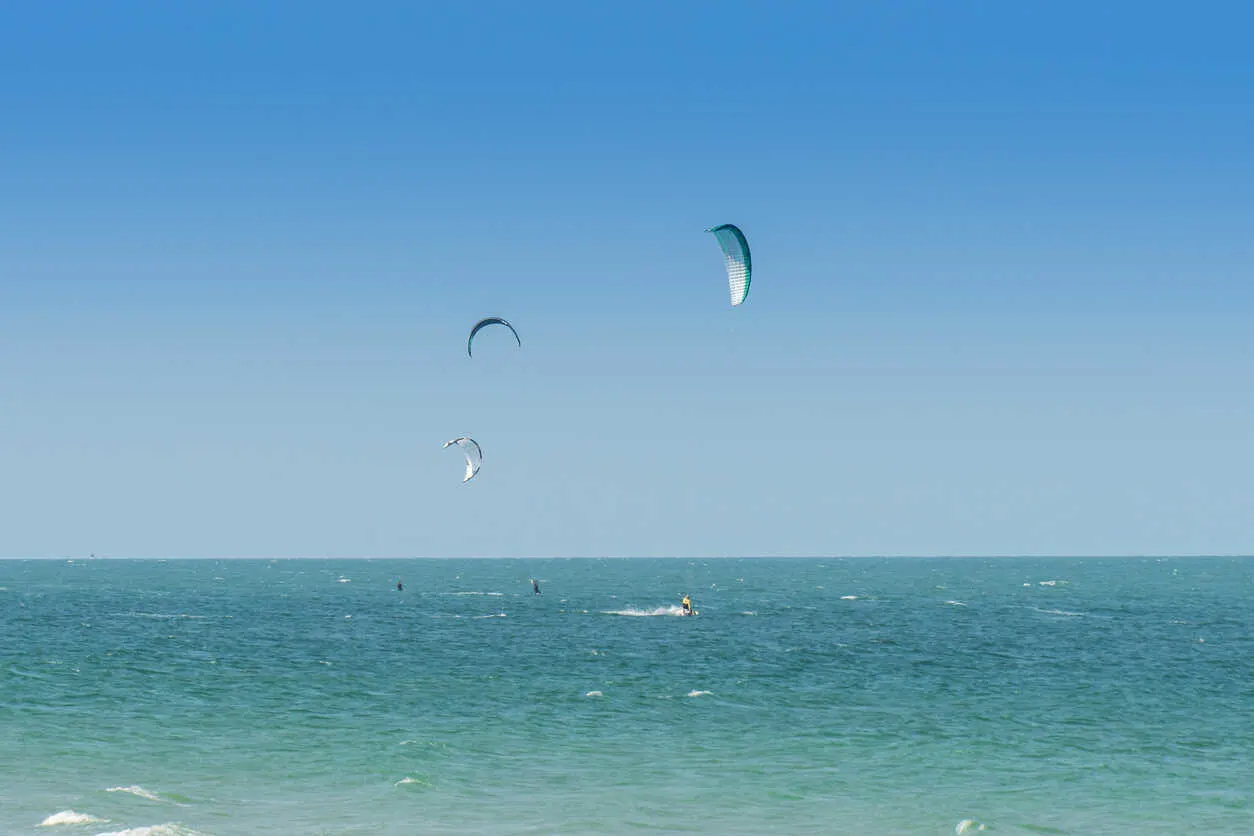
The expat communities attracted to these two sandy seaboards are quite different, though they do share a few similarities. The average expat living in Hua Hin is probably between 55 and 80 years old and is likely half of a couple. Meanwhile, the average expat in Pattaya is typically a single male between 50 and 65.
Hua Hin’s smallish expat population creates a “village” atmosphere where everybody knows everybody. Golf is probably the number one pastime for retirees and expats, with ten world-class golf courses located nearby, including Black Mountain, which is frequently featured on both the European and Asian PGA tours.
Both sides of the Gulf of Thailand are perfect for water sports like windsurfing, jet skiing, sailing, and fishing. Hua Hin even has a kite surfer competing in the Olympics for Thailand. People tend to form social groups around shared interests, and many of the expats I’ve met in Hua Hin started out in Bangkok before moving down for the fresh air and tranquility. Pattaya, by contrast, attracts expats from all over the world and all walks of life.
One surprising activity I discovered in Hua Hin is the presence of an active wine culture and social calendar. Wine tastings, wine dinners, and wine events are sprinkled throughout the year, drawing an enthusiastic following of expats from all over the world. The Monsoon Valley Vineyard, 45 km east of Hua Hin, is Thailand’s largest and boasts successful harvests of ten varietals. If you hurry, you can make it to the annual Vineyard Fest from August 9th to 12th and enjoy everything from grape stomping to a five-course lunch at the Chef’s Table.
Pattaya’s expats, on the other hand, are distributed down the coastline in a scalloped pattern of beach after beach, each with its own vibe and cultural makeup. Living in Pattaya City or Pattaya Beach is a full-on, frenetic city experience that offers 24/7 tourism. However, if you head to the northernmost beach communities of Wongamat and Naklua, you can enjoy private beaches with five-star resorts and great restaurants. Drive ten minutes south to Jomtien, and it’s a different world, with six kilometers of golden sand and none of the package tourist din. Keep going for another 15 minutes to Bang Saray, and you can watch squid boats going out at sunset. It’s a cluster of unique beach communities linked by a main road, but most residents socialize in their little neighborhood. The further you get away from Pattaya City, the quieter it gets.
When considering foreigners living in Pattaya, we often overlook the massive housing estates in East Pattaya, which are further inland and heading away from the beach. About 25 km north of Pattaya is the deep-sea port of Laem Chabang and some of the largest industrial parks in Asia. At the extreme southern end of the eastern seaboard is Map Ta Phut Industrial Port, the country’s largest industrial estate and the world’s eighth-largest petrochemical hub.
Many of the foreigners who work for companies like Honda, Mitsubishi, Dow Chemical, and others live in numerous housing estates in East Pattaya. The working expats from all over the world are part of what makes Pattaya unique and are a key reason why it has developed much more robustly than its cousin across the Gulf. It’s a multifaceted city rather than a tourist town.
Hua Hin’s Hidden Gem: The Live Music Scene

Pattaya’s expats are similar to those in Hua Hin in that golf is a major pastime, with 25 golf courses less than 60 minutes from the center of town. Water sports, of all descriptions, are a big draw to Pattaya, with several international jet ski, windsurfing, and kiteboarding events being held annually.
The variety of things to do and the number of events scheduled in Pattaya are mind-boggling. I live in Jomtien Beach, and last year alone, I attended my first polo match and my first LPGA event. I also witnessed two nights of the International Fireworks Festival and began learning jiu-jitsu at a local gym. Pattaya is also home to some world-class restaurants and probably has more pubs and bars per square kilometer than any place on the planet.
One expat complaint I’ve heard for years is the lack of kinder, gentler nightlife and good live music in Pattaya. Conversely, Hua Hin's surprise superpower is its vibrant live music scene. I spoke with John C. Murphy, an event promoter in Hua Hin, who named ten venues with great live music before I could ask him a second question.
There’s a big annual jazz festival in June that attracts acts from all over the world. A “must-see” are Hua Hin’s two spectacular night markets, Cicada and Tamarind, which feature an onslaught of good food and some excellent local and expat musicians. When I asked John who came out to hear the music, he said, “Everybody! We see lots of expats, couples, locals, Bangkokians, and recently a younger crowd of digital nomad types.”
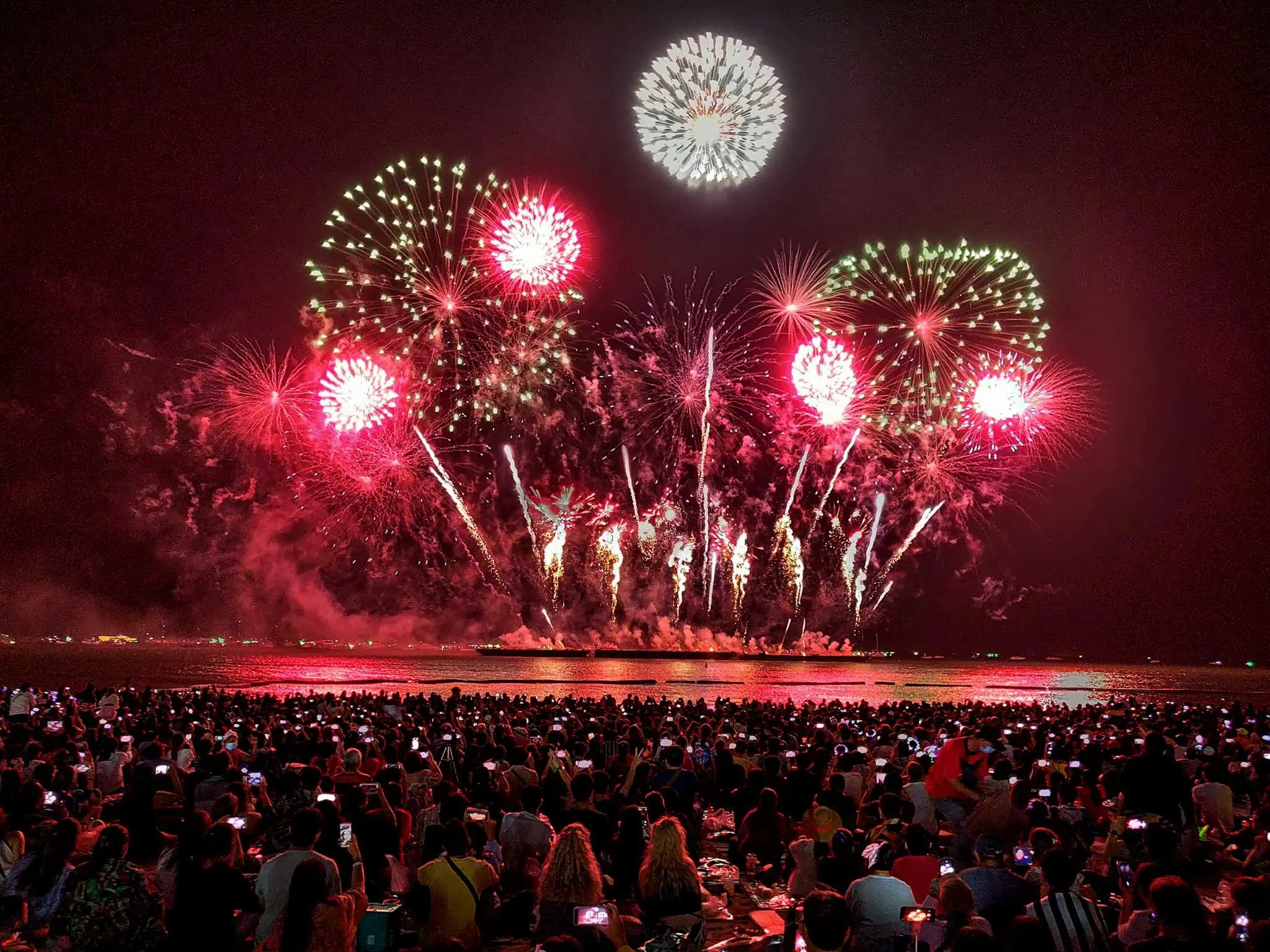
I also spoke with Keith Nolan, an Irish bluesman who fronts a group called “The Cottonmouth Kings” based in Bangkok. I asked why he traveled to play in Hua Hin and not in Pattaya. Keith said, “Pattaya’s more of a rock-n-roll crowd, and Hua Hin is jazz and blues ... that’s my groove, brother.”
A few years ago, someone started a ferry service that ran across the Gulf of Thailand to take people between Hua Hin and Pattaya. It only took 2.5 hours and was designed to carry 350 people. However, it closed within a year due to a lack of interest, clearly illustrating that not only are these expat populations living distinctly different lifestyles, but they also show little interest in swapping places.
My friend Lester Smith, a long-time expat and hotelier, is the only person I know who has ever switched from Hua Hin to Pattaya. He said it was like moving from “Mayberry to Miami.”
Your chance to retire overseas now
Your chance to retire overseas now
Learn more about Thailand and other destinations by signing up to our daily IL Postcards e-letter and we'll immediately send you a free report: 20 Countries Compared, Contrasted, Ranked, and Rated.
You don’t have to be rich to enjoy a pampered retirement, you just need to know where to go.
With our 34th Annual Global Retirement Index, our experts hand you a detailed roadmap. Details and a Special Offer Here!

By submitting your email address, you will receive a free subscription to IL Postcards, Overseas Dream Home, The Untourist Daily and special offers from International Living and our affiliates. You can unsubscribe at any time, and we encourage you to read more about our Privacy Policy.
Cost of Living: Value vs. Variety
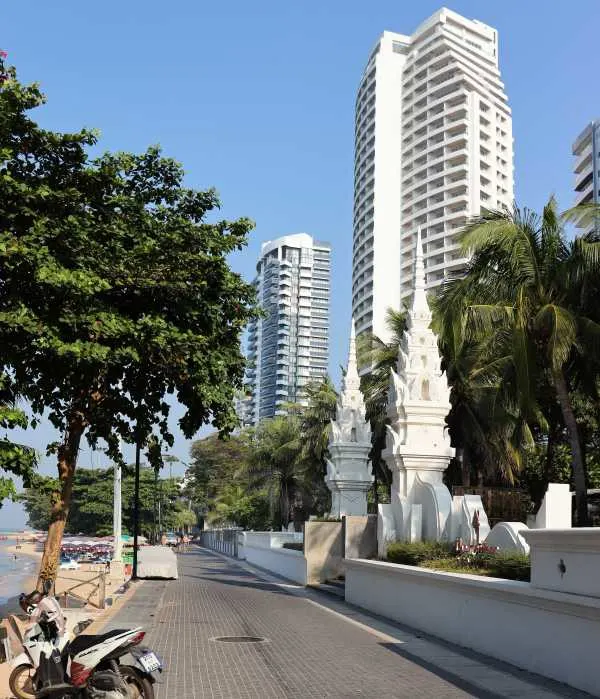
Both Pattaya and Hua Hin offer a lower cost of living than Bangkok, with Hua Hin being the cheapest by far. A meal for two at a mid-range restaurant in Pattaya will cost about 1,000 THB ($28), while in Hua Hin, it would be about 850 THB ($24). A cappuccino in Pattaya is 75 THB ($2), and in Hua Hin, it is probably 60 THB ($1.70); the same goes for a domestic beer.
Housing costs reveal the largest gap. In Pattaya, you’ll be overwhelmed with choices, from skyscraper sea-view condos to tropical villas with saltwater pools. Hua Hin has a nice array of choices as well, but mostly low-rise condos, houses, and bungalows.
A one-bedroom condo in Pattaya City would go for 15,000 to 20,000 THB ($425 to $570) per month. A similar unit in Hua Hin would go for 10,000 to 13,000 THB ($285 to $370). A two-bedroom pool villa in East Pattaya would cost about 25,000 THB ($710) per month, while the same type of unit in Hua Hin costs 20,000 THB ($570). Within the most popular areas, Hua Hin’s rent is cheaper by 30%, but rates tend to even up as you get further away from the city centers.
Both places have a lot of property for sale. There’s an endless supply of condos, old and new, all along the Chonburi Coast and plenty of houses in East Pattaya. Hua Hin has enjoyed a surge in development with many places available, but nothing on the scale of Pattaya.
Prices for premium sea-view property in the city centers of both places are similar: 80,000 to 120,000 THB ($2,265 to $3,400) per square meter. Moving away from the center of town will cause prices to drop drastically. A condo in Jomtien Beach near Pattaya going for 60,000 to 75,000 THB ($1,700 to $2,125) per square meter would probably be 30,000 to 40,000 THB ($850 to $1,135) per square meter on the outskirts of Hua Hin.
Overall, I’d estimate that Hua Hin is about 15% cheaper to live in than Pattaya for essentials like food, shelter, utilities, etc. However, the sheer number of activities and events in Pattaya could create a much bigger gap, depending on your lifestyle.
My advice for those who want to be near the energy and amenities of Pattaya but want to pay Hua Hin prices is to check out Pratumnak Hill, Jomtien Beach, Ban Amphur, and Bang Saray, the beach communities just south of Pattaya. Nicer beaches, fewer tourists, lower rents.
Future Prospects: Growth on Both Coasts
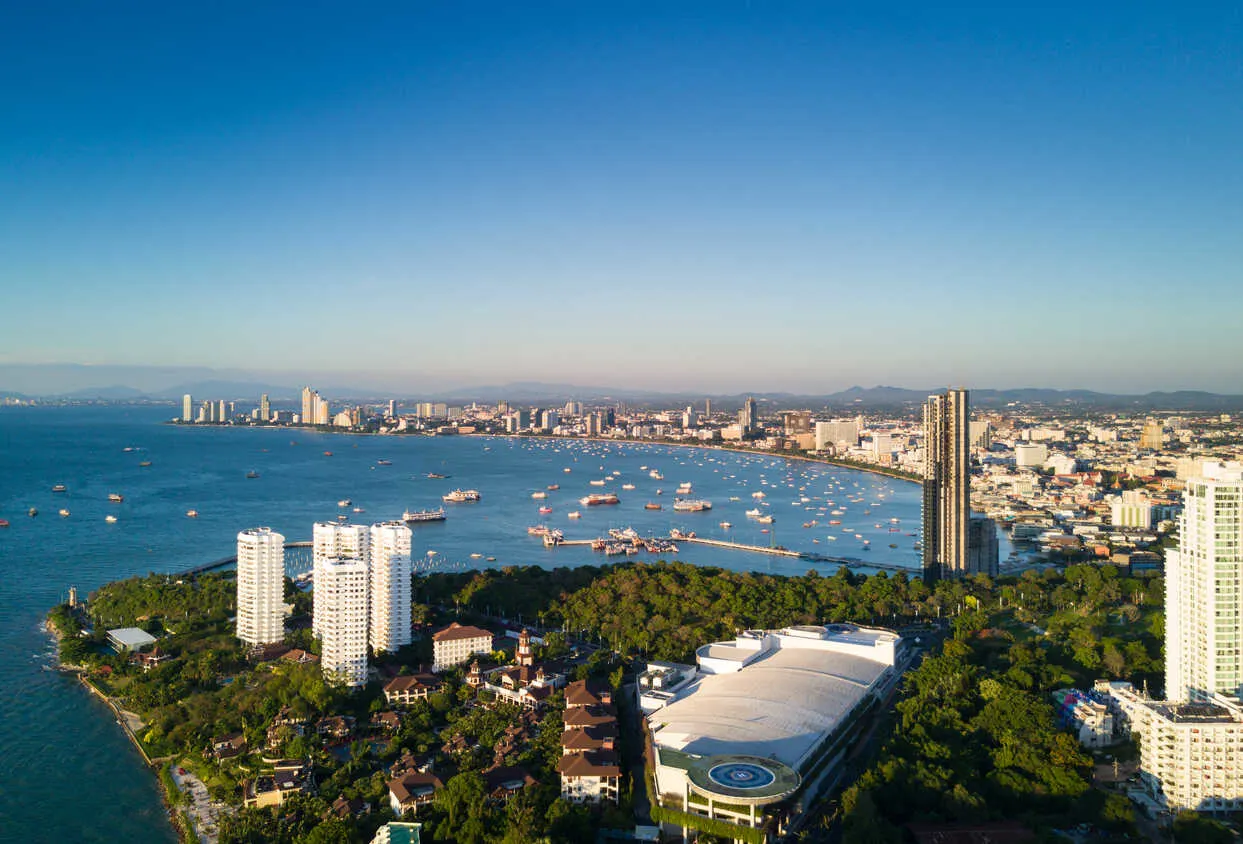
We don’t need a crystal ball to tell the future of these two cousins. The Thai government has assigned and funded huge infrastructure projects for each region. Hua Hin is the crown jewel in the “Royal Coast Project,” which is expected to include an airport upgrade, high-speed train access, and several other enhancements designed to create the “Thai Riviera” mystique.
The project was approved in 2018, yet almost none of it has materialized. I asked my old friend Sam Armenio, a chef and former Hua Hin restaurant owner, why the Royal Coast project has stalled. He didn’t say much; he just gave me that look expats give each other when the subject of the royal family comes up. I suspect the glacial pace of development for Hua Hin will continue, so I wouldn’t expect property values to explode or any major developments to occur—just a slowly growing expat community (with good music).
Pattaya, on the other hand, is at the heart of the Thai government's most potent infrastructure project currently underway—the Eastern Economic Corridor (EEC). A high-speed train connecting Bangkok’s two airports with Pattaya’s will pull the entire coast closer by 90 minutes. Both deep-sea ports are expanding, as is the U-Tapao International Airport. There’s even talk of a cruise ship terminal. Thailand’s tallest residential buildings won’t be in Bangkok; they’ll be somewhere on the Chonburi Coast.
The EEC is Thailand's economic backbone, and the golden sands of Pattaya are right in the middle of it. As an expat with a ringside view of Jomtien Beach, I can confirm that this project is moving full speed ahead. I see results and have directly enjoyed the benefits, with a 30% jump in property value over the past four years. I would expect the EEC juice to keep flowing and the Chonburi Coast to keep growing.
Perfect Microcosm
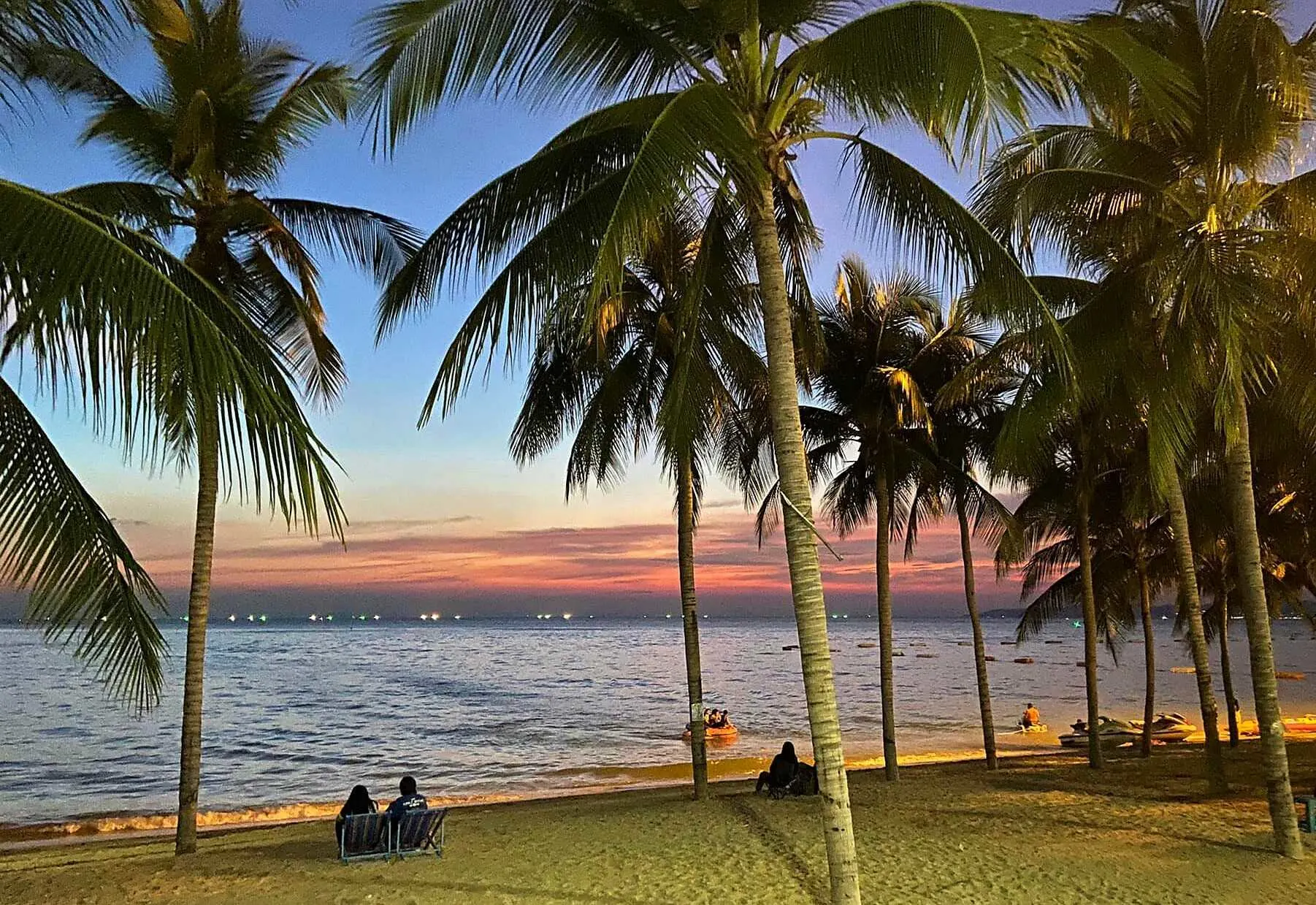
When people ask me which places are best for expats to live in Thailand, I have a hard time explaining how diverse the communities are, even within subsets like “coastal cities” or “beach towns.” I think the Hua Hin vs. Pattaya comparison serves as a perfect microcosm of what’s available all over Thailand: mild to wild, boring to booming, and everything in between.
In the final analysis, it doesn’t matter if you are witnessing the golden sun rising out of the sea from Hua Hin Beach or basking in the glow of a mango-colored sunset from a rooftop bar overlooking Pattaya Bay. When you find the place that fits, you’ll understand why they call it the “Land of Smiles.”
Your chance to retire overseas now
Your chance to retire overseas now
Learn more about Thailand and other destinations by signing up to our daily IL Postcards e-letter and we'll immediately send you a free report: 20 Countries Compared, Contrasted, Ranked, and Rated.
You don’t have to be rich to enjoy a pampered retirement, you just need to know where to go.
With our 34th Annual Global Retirement Index, our experts hand you a detailed roadmap. Details and a Special Offer Here!

By submitting your email address, you will receive a free subscription to IL Postcards, Overseas Dream Home, The Untourist Daily and special offers from International Living and our affiliates. You can unsubscribe at any time, and we encourage you to read more about our Privacy Policy.
